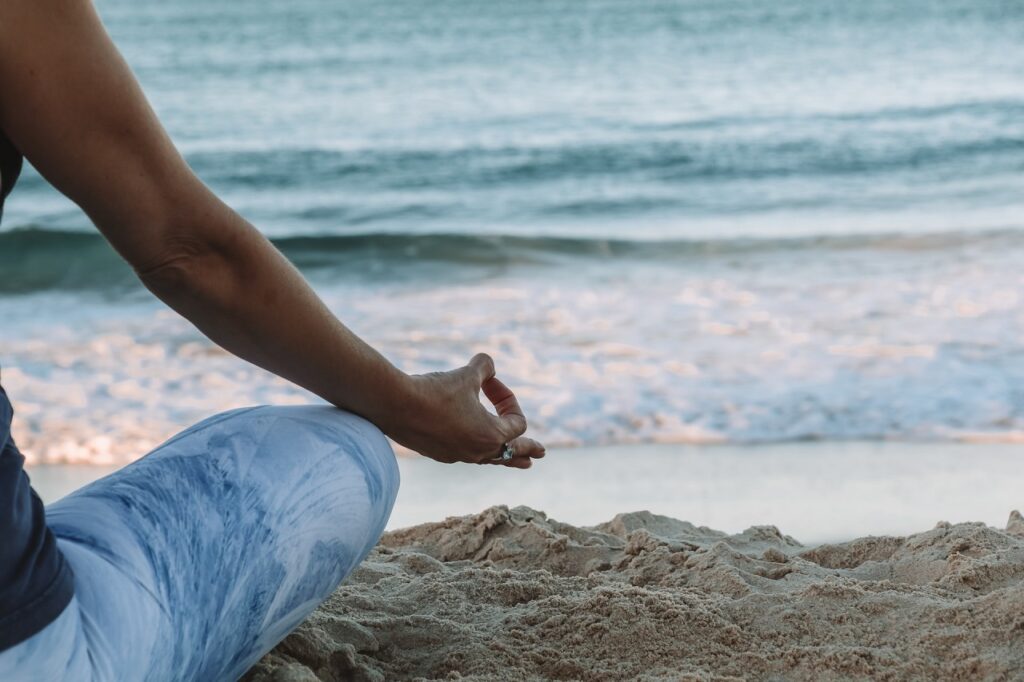We all need balance to cultivate a healthy state of mind as also mindfulness — one that allows us to handle or ‘walk’ comfortably through difficulty, adversity, or chaos.
Mindfulness teaches, promotes and expands our balance of mind and also body. It helps us to overcome imbalance, or conflict; it also provides us with a wonderful ‘connect’ to live and flourish in the present-moment.
All of this, and more, does not, of course, emerge when you first begin to practice mindfulness. It happens over a period of time — it slowly becomes something you ‘live,’ not just something you practice, or follow.
When it becomes a habit the countless pressures of life will not have the exhausting impact they had before. This is simply because you begin to respond to situations in a calm, conscious manner. You bring to life the blending, the synthesis, the fusion and harmony — be it work, presentation on the job, your home, spouse, kids, relaxation, or a quick, unplanned get-together during the weekend.
When you practice mindfulness, everyday — or, being one with oneself — for 20-30 minutes, each day, it packs more power to your mind, body and soul, perhaps, much more than doing a 2-3 one-hour yoga sessions each week.
You’d do well to, of course, make sure that you allocate a ‘sacred’ space for your mindfulness practice.
Things To Do
- Sit in the meditative pose on the mat. Or, a comfortable chair. Place your hands on your thighs, or armrest
- Switch off your mobile phone and turn off your TV
- Light a candle, or organic incense, which does not ‘trigger’ your allergies
- Try to slowly connect with your deepest spiritual self — just breathe in and breathe out. Go with the flow. Be the observer of your breath, nothing else, while allowing fresh thoughts to come and go and not stay put. You will feel energised and relaxed.
The next best thing to do is exercise.
When you exercise on a regular basis, you release the feel-good chemical, endorphins.
- Exercise is not just pumping up your muscles, but also being consciously aware of your breathing at every step. There are also a handful of other things you’d do without sweating the small, or big stuff. The first is being aware of your breathing and ‘feeling’ it from deep within. Breathing brings responsiveness to your mind, body and soul, especially in times of stress
- Try to slowly loosen up your shoulders, back and down, during the process; it eases your tensions from your muscles — your ‘pressure points’ of stress.
When you enthusiastically move along the path of mindfulness exercise practice, you develop a new perspective. This will expand and become a part of your being. And, as you constantly focus on your breath, and its flow, you return slowly to present-moment reality.
Other Things To Do
You’d aim to ‘steer’ your day carefully in the practice — differently. For example, before you start your car, or travel to work, give your body a good stretch and set your objective for a peaceful, safe journey.
- Now, relax your grip on the steering wheel for a few seconds before you drive
- Think of situations that caused you frustration — ‘let go’ and return your attentiveness to your breathing too
- Drive carefully
- At the workplace, get up from your desk, every hour, or two, for 3-5 minutes. Walk up and down the corridor or, if you can go out, get some fresh air and sunshine — to beat the ‘blues.’ Keep your focus in place.
And… Honour the Divine
When you meet people in your everyday life, look into their eyes and silently greet them and honour their resident divinity.
- You’d, if you wish to, practice jaw relaxation. Just keep your tongue at the ‘fire point’ — the spot on the roof of your mouth between your two upper front teeth. This ‘exercise’ helps to keep your jaw, the ‘seat’ of stress, relaxed
- Most important — practice ‘silent’ self-talk too, on a regular basis, to experience the union of body, mind, and soul, and access the harmonious, ever-expanding calmness of pure conscious-attentiveness, or transcendent awareness, of your entire being.
You’ll feel as fresh as the early morning dew.

